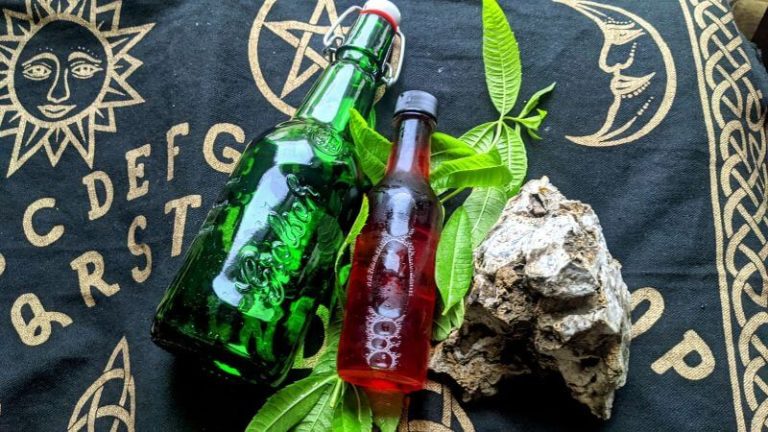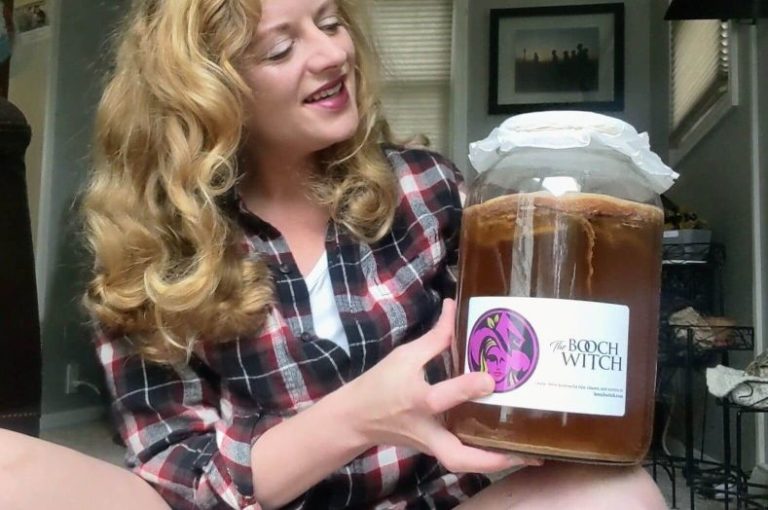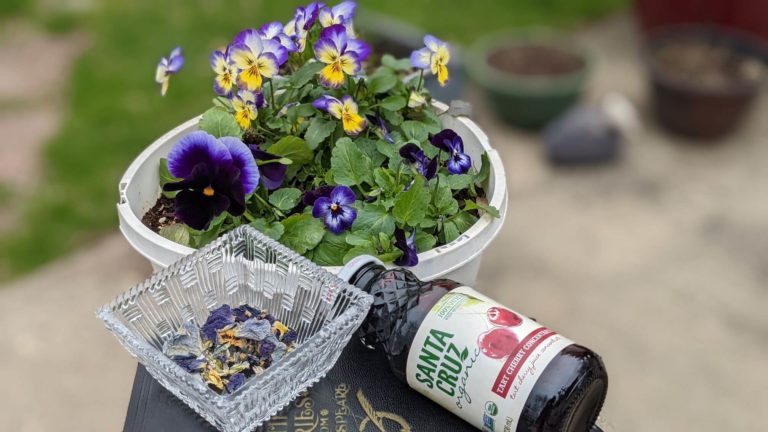What is kombucha?
Kombucha is basically a fermented, fizzy sweet tea that has experienced something of a renaissance in the late 2010s.
The first recorded use of this beverage comes from China in 221 BC during the Tsin Dynasty. Way back then, it was known as “The Tea of Immortality.”
A simple-but-complicated, couple-weeks-long process transforms sweet tea into this brew with the help of a SCOBY (symbiotic colony of bacteria and yeast).
In my experience, brewing a batch of my kombucha takes about two weeks, start to finish.
Subscribe To My Newsletter
Why brew kombucha at home?
If you love the benefits of self-care beverages like kombucha but cringe at the retail price, I can help you learn how to save hundreds (maybe thousands!) of dollars per year by making your own kombucha at home.
Consider this: If you drink three servings of kombucha a week and pay about $3 each at a store, that’s almost $10 a week or $500 a year.
Not only does brewing kombucha at home provide significant savings, it gives you a vessel to express your creativity. Make your own flavors based on the season, or your best friend’s favorite fruit.
All you need to get started are some bottling jars, a large, glass brewing vessel, some tea, sugar, coffee filters, rubber bands, occasional fruits and syrups, a scoby, and you are off!
Who is the Booch Witch?
Katie Kuznacic, a.k.a The Booch Witch, started making kombucha in her kitchen in the spring of 2017. She’s enjoyed the ritual ever since and estimates that she has saved thousands of dollars in the process.
Katie enjoys bringing new DIY self-care techniques to those who seek that balance. This blog and her how-to classes are her way of sharing this health-friendly hobby with others.
The Booch Witch Blog
Tips, tricks, recipes, and more!

Cran Bam…. Thank you, ma’am!
A Quick and Easy Recipe If you are looking for a breezy, straightforward homemade kombucha recipe, you’ll love my Cran Bam Kombucha recipe! Featured Flavors

Coffee Filters: the best cover for kombucha brewing vessels
The BEST way to protect your scoby and kombucha brew is with a simple coffee filter (or two) and a sturdy rubber band.

May Flowers: Springtime Kombucha Recipe
Flavor homemade kombucha with The Booch Witch’s May Flowers recipe. Take advantage of organic concentrate, like tart cherry, to compliment the sweet floral notes from easy-to-find spring flowers like violets and pansies.